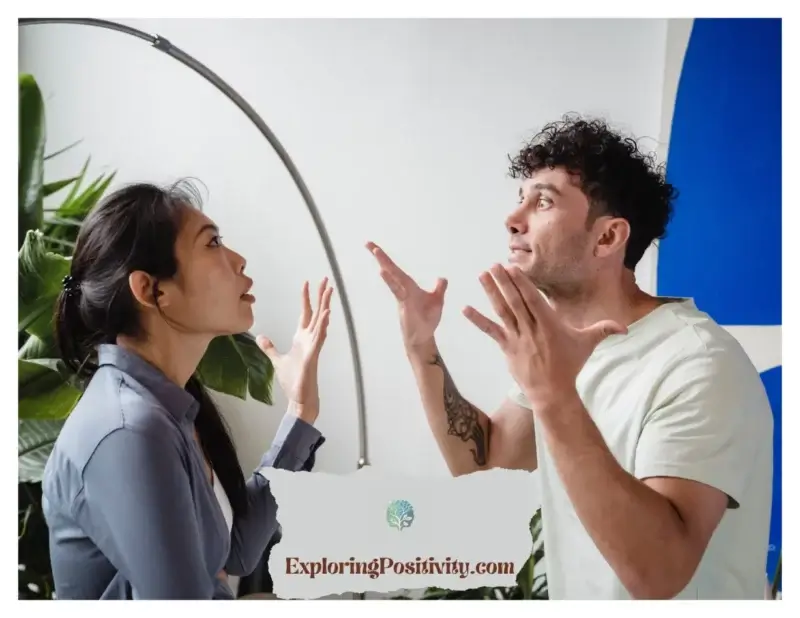Attachment theory shows that how we learn to emotionally attach as children continues to influence how we bond as adults. When there is instability or emotional unavailability in childhood, it can lead to an avoidant attachment and lying style.
People with avoidant attachment have difficulty with emotional intimacy in adult relationships. They instinctively minimize closeness and vulnerability. This leads to certain distancing behaviors.
One unfortunate behavior can be frequent lying to create distance. Even simple white lies that exaggerate a disinterest in the relationship.
But with understanding and effort, those with avoidant attachment and lying can overcome ingrained defenses that fuel dishonesty. With compassion from their partner, they can build trust and communication.
If you are struggling with an avoidant attachment partner who lies and withdraws. I encourage you to continue educating yourself through resources like this article. There is hope for developing a secure attachment when both partners commit to vulnerability and empathy.
Stay patient with yourself and your partner. With consistent effort, emotional intimacy is possible. Keep communicating openly. Small steps forward will accumulate into transformed relationships.
In this article, I will cover the following main aspects:
- What is avoidant attachment and its impact
- Why avoidantly attached people lie
- How to have healthy communication and honesty
- Tips for overcoming shame
- When to seek counseling
- Finding an attachment-focused therapist
Understanding the origins of lying gives hope for change. Let’s explore how avoidant attachment develops and practical ways to improve closeness.
What is Avoidant Attachment?
Avoidant attachment is an instinctive emotional style first formed in infancy. According to attachment theory pioneer John Bowlby, attachment behaviours begin immediately after birth.
Definition of avoidant attachment
Those with avoidant attachment and lying attempt to minimize closeness in relationships. They instinctively suppress emotional needs and avoid too much intimacy.
Their caregivers may have been emotionally unavailable or rejecting closeness as kids—this conditioned avoidance behaviors.
The main characteristics of avoidant attachment
Adults with avoidant attachment often display:
- Discomfort with emotional intimacy
- Suppressed emotions or difficulty expressing feelings
- Excessive self-reliance and independence
- Distancing behaviors when feeling vulnerable
- Lying or downplaying problems to create distance
They learned early on that wanting closeness only led to hurt. So, they adapted by avoiding vulnerable emotions that desire intimacy.
Avoidant attachment causes
Avoidant attachment frequently stems from:
- Emotionally unavailable parents
- Rejection or neglect from primary caregivers
- Parents who actively discouraged emotional needs
- Abuse, trauma, or inconsistent meeting of needs
- Lack of physical affection as a child
This conditioned the child to seek less closeness from others in adulthood.
Avoidant attachment in children
You may notice avoidant attachment in children through:
- Little emotional responsiveness to parents
- Does not seek comfort when hurt or distressed
- Little affection or cuddling; dislikes physical touch
- Prefers to play alone; avoids other kids
- Excessive maturity and independence for age
Avoidant attachment in adults
In romantic relationships, adults with an avoidant attachment may:
- Need a lot of “me time” away from partner
- Be uncomfortable with too much closeness or PDA
- Struggle expressing love, compliments, appreciation
- Keep discussions superficial to avoid emotional topics
- Lie about their feelings or commitment to the relationship
Avoidant attachment in romantic relationships
People with avoidant attachments gravitate towards distancing behaviors in dating. They may:
- Keep first dates to non-intimate activities like concerts
- Start very independent; leave belongings at your own home
- Be slow to introduce a partner to friends and family
- Avoid labeling the relationship or future planning
- Frequently work late, travel, or need alone time
This distancing maintains a safe buffer against potential hurt and rejection. But it also prevents emotional intimacy from developing.

Why Avoidantly Attached People Lie
To avoid intimacy and vulnerability, those with avoidant attachments tend to use dishonesty to create distance.
Lying to avoid intimacy
Any conversations or questions that feel too intimate may cause them to lie. Talks about the future, meeting family, or romantic gestures may all feel intrusive.
Rather than communicate their discomfort, they may tell falsehoods to sidestep intimacy.
Lying to maintain distance
White lies exaggerating their disinterest are common. Avoidants may lie about how they see the relationship unfolding to slow a partner’s expectations.
They may claim work obligations prevent closeness when they feel smothered. Dishonesty maintains distance.
Lying out of discomfort with vulnerability
Expressing affection, needs, fears, or insecurities, all feel vulnerable. So, avoidants may lie and downplay their emotions rather than reveal sensitivity.
Lying to avoid rejection
Avoidants expect rejection when opening up emotionally. So, lies help avoid the anticipated abandonment.
Fear of judgement from truth
Revealing their difficulty with intimacy could lead to feeling ashamed. So false assurances feel safer.
Avoiding attachment and emotional needs
Admitting attachment means acknowledging emotional needs. Avoidant lies dodge both.
Independence valued over intimacy
Avoidants lie to preserve self-reliance. Emotional bonding requires interdependence, and honesty opposes this.
By understanding their instinct to lie protects from dependence and hurt, you can have empathy. Dishonesty serves a purpose but can evolve.
Common Lies and Exaggerations
Specific topics and vulnerable conversations often trigger dishonesty in avoidantly attached people.
Lying about feelings and emotions
Avoidants may say “I’m fine” when sad or lie about “nothing’s wrong” when angry—admitting emotions risks intimacy.
Downplaying emotional needs
They’ll likely deny needing affection, approval, or gestures of commitment. Vulnerable needs get minimized through lies.
Exaggerating independence
Lying about how little they need others helps avoid dependence. They’ll overstate their autonomy.
Lying to create physical or emotional distance
Any lie to add space from closeness provides comfort. Avoidants may falsify obligations, keeping them away.
False commitments to relationship longevity
It feels safer to offer vague promises of future commitment than express emotional investment.
Dishonesty about interest and attraction
Avoidants may lie about their attraction, not wanting to stoke partners’ need for intimacy.
Feigning understanding to avoid further discussion
Deeper, vulnerable talks get cut off through lies like “I get it, no need to continue.”
Dismissing relationship problems as unimportant
Challenges feel too intimate to share, so they’re downplayed as insignificant.
By noticing when and why lying manifests, it can be addressed compassionately.
Overcoming Lying and Building Trust
It takes great effort for avoidants to resist instinctive lies and open up emotionally. But with care from their partner, trust and honesty can grow.
Recognizing avoidant patterns as a couple
Both partners should educate themselves on attachment theory to understand each other’s intimacy needs.
Working slowly to establish safety and stability
Rushing will overwhelm avoidants. Time and consistency build trust in showing their feelings won’t drive away their partner.
Avoidant partner openly acknowledging difficulty with vulnerability
Owning their struggle to be vulnerable allows for patience and removes guilt.
Making small requests to build trust over time
Asking for tiny acts of openness within their comfort zone shows positive intent.
Reassuring avoidant partners they are accepted and secure
Consistent emotional responsiveness creates safety to minimize distancing lies.
Scheduling frequent check-ins on needs and emotional wellbeing
Routine vulnerability conversations make them less intimidating.
Anxiety partner speaking calmly and not taking distance personally
Deescalating tension encourages avoidants to open up.
Finding comfortable physical touch that works for avoidant
Slowly adding affection and eye contact makes bonding feel safe.
Always maintain honesty, even under challenging talks
Relatable transparency models risk-taking.
Therapeutic techniques to overcome lying and shame
Counseling gives tools to unlearn maladaptive patterns.
While effortful, both partners can rewrite harmful dynamics with empathy.
Healthy Communication Tips for Avoidant Partners
Avoidants can challenge instincts to lie and withdraw through mindful communication.
Take space when needed, but explain the reasons
Directly verbalize the desire to pause and reflect rather than deceive.
Acknowledge partner’s feelings and emotional needs
Validating their experience, even if uncomfortable, builds trust.
Verbalize your feelings, even if they are difficult
Briefly naming emotions invites intimacy without having to elaborate until ready.
If lying instinct emerges, state you need time before responding
Asking to pause counteracts the reflex to deceive.
Reassure partner of care and commitment despite needing space
Affirm loyalty before withdrawing.
Apologize after withdrawing and re-engage emotionally
Sincerely own impact on partner and reestablish closeness.
Proactively anticipate situations that may trigger avoidant reactions
Plan coping strategies for known vulnerabilities.
Validate partner’s anxieties without withdrawing into false assurances
Acknowledge fears while still expressing personal boundaries.
Share appreciation for your partner respecting your boundaries
Positive reinforcement encourages compromise.
Incremental openness and accountability can rewrite attachment patterns.
Overcoming Shame About Avoidant Attachment
The roots of avoidance often invoke shame. However, self-compassion is essential to overcoming ingrained defenses.
Accepting avoidance as an instinctive protective reaction
Recognize distancing as an adaptive attempt to prevent hurt based on childhood wounds, not something fundamentally flawed in you.
Understanding it developed due to childhood environment
Your avoidance originated from early life experiences beyond your control. It protected you, then.
Separating current behaviors from identity as a person
You are not inherently avoided. With effort, new behaviors can develop.
Avoidant attachment is standard and can be improved
Nothing is permanently broken in you. Millions overcome similar struggles.
Focusing on growth and change, not judgment
Self-criticism worsens avoidance. Compassion enables improvement.
Opening up slowly and in small steps feels safest
Baby steps reinforce security to take more significant risks eventually.
Therapist can help reframe shame into an opportunity for intimacy
Counseling transitions self-blame into motivation for closeness.
Partner’s unconditional support essential for vulnerability
Acceptance permits expression without fear of rejection.
Celebrate small moments of authenticity and connection
Notice and savor when avoidance wavers, even briefly.
Attachment patterns do not define you
While ingrained, your avoidance is only one part of who you are and can evolve.
With support, avoidant patterns previously hindered intimacy can transform into strengths for deeper connections.
When to Seek Couples Counseling
If avoidant-fueled conflict persists despite efforts, seeking professional guidance can help. Consider counseling if:
Relationship distress or repeated conflict
Frequent fighting suggests communication needs improvement. Therapy offers structure.
Ongoing feelings of insecurity from avoidant distancing
A therapist can educate the avoidant on their partner’s needs.
Increased lying, secrecy, emotional withdrawal
Avoidance is increasing despite intervention attempts. Counseling realigns coping mechanisms.
Difficulty communicating needs calmly as a couple
Productive conflict resolution skills would benefit the relationship.
Questions arise about the viability of the relationship
Partners feel they need to be more confident about continuing together. Counseling provides clarity.
The avoidant partner shuts down during vulnerable talks
A therapist facilitates discussions in a safe, controlled setting.
Expressing affection feels uncomfortable or forced
Intimacy issues need professional input.
General unhappiness or resentment in the relationship
Dissatisfaction suggests change is needed that counseling facilitates.
Desire to break attachment patterns and become closer
Therapy gives proven techniques to overcome ingrained relating styles.
An outside expert who handles avoidance can guide partners into greater closeness and trust.
Finding an Attachment-Focused Therapist
The most effective counseling for avoidant attachment uses evidence-based techniques targeted to attachment wounds. Here’s how to identify specialists:
Search the Psychology Today therapist directory
This database lets you filter by specialty, like “attachment disorder.”
Look for therapists knowledgeable in attachment theory
Their psychology orientation will mention attachment perspectives.
Avoidant attachment experience is listed in the therapist’s profile
This indicates they directly work with attachment avoidance.
Specialization in Emotionally Focused Therapy (EFT)
EFT uses attachment theory and deep emotional processing.
Training in couples counseling and attachment trauma
Expertise shows they understand both relationship dynamics and avoidance.
Holistic therapeutic approach to attachment wounds
They treat avoidance on cognitive, emotional, and somatic levels.
Focus on vulnerability, emotional needs, trust building
Methods directly counter attachment avoidance defenses.
Not a “one-size-fits-all” approach to couples
They personalize treatment to fit the nuances of each relationship.
Comfortable with slow, incremental progress
The therapist understands patience is essential in treating avoidance.
The right couples counselor provides a roadmap to overcome ingrained defenses for increased closeness.
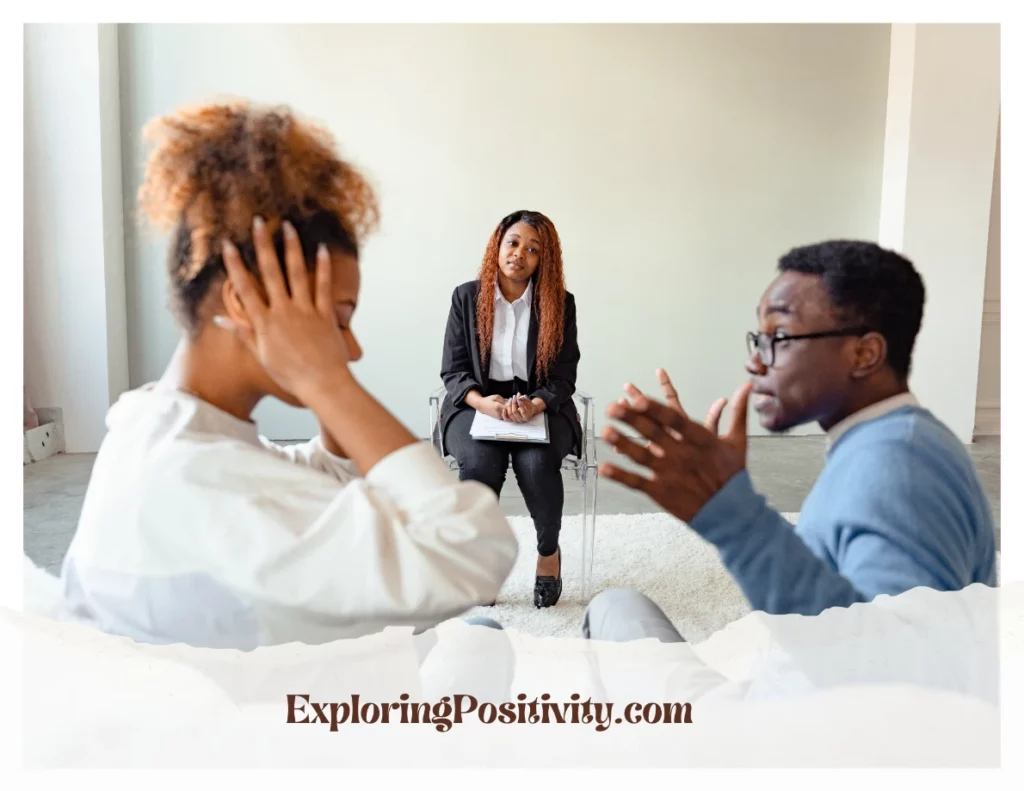
Rebuilding Emotional Intimacy as a Couple
While avoidant partners instinctively minimize closeness, the relationship can gradually develop new patterns of vulnerability and empathy. Some techniques to try:
Schedule “emotional check-ins.”
Set routine times just to share feelings, conflicts, and insecurities without judgment. Make it safe.
Take intimacy slowly
Don’t rush into too much closeness. Slowly broaden emotional discussions from superficial to more profound.
Practice mindful listening
Give full attention when your partner shares vulnerable emotions. Refrain from solving or dismissing.
Validate each other’s experiences
Even differing needs are legitimate. Communicate respect for each person’s reality.
Express affection through safe means
Hand-holding, gentle hugs, and sincere compliments. Find what touches avoiding partner’s heart.
Spend quality non-sexual time
Build emotional intimacy through activities like cooking, walking, or traveling together.
Attend couples workshops
Learn communication techniques in a structured environment. Local classes or online.
Read relationship books
Studies show couples who read together report greater closeness and satisfaction.
Write love letters
Express your caring, commitment, and gratitude through heartfelt letters.
Give unconditional support
Don’t withdraw affection during conflicts. Reassure partner of unwavering acceptance.
Volunteer together
Sharing in community service generates meaning, teamwork, and bonding.
Overcoming Relationship Fears
For the avoidantly attached partner, opening up requires facing deep-seated fears. Some methods to overcome them:
Name the fears
Verbalize anxieties about betrayal, rejection, or engulfment. Sharing them disarms their power.
Separate the past from the present
The current partner is a new opportunity, not a replay of old wounds. Stay present.
Challenge catastrophic thinking
Monitor thoughts for exaggerating fears. Ask, “What’s the likelihood the worst will happen?”
Allow comfort from partner
Let them compassionately listen, hug, and reassure you. Receiving care weakens defenses.
Cry pain away
Suppressed emotions maintain walls. Let tears flow to begin releasing hurt.
Visualize positive outcomes
Imagine intimacy unfolding smoothly. Mental imagery shapes reality.
Learn your partner’s love language
Better understand how they communicate love to receive it through your language.
Practice self-love
Critical inner voices fuel fear. Develop compassionate self-talk.
Increase social support
Spend time with trusted friends and family to ease reliance on just partners.
Establish emotional safewords
Agree on words said during conflict, signaling you feel overwhelmed. Pause talk.
List relationship joys
Write all the ways this partner adds happiness. Gratitude shrinks fear.
Keep a mindfulness journal
Record emotions and fears. Awareness itself soothes their grip.
Healthy Boundaries in Avoidant-Anxious Relationships
Boundaries allow avoidants to retain emotional autonomy while gradually inviting intimacy. Some tips:
Respect each other’s time
Preserve regular alone time and independent hobbies. Don’t suffocate.
Seek common ground
Find mutually enjoyable activities that meet both social and solitary needs.
Take space during conflicts
If talks get heated, mutually agree to take a break and regroup when calm.
Speak up about needs
Directly yet kindly state when you need more affection or distance.
Compromise on togetherness
Don’t always default to your anxious partner’s preferences. Find a middle ground.
Maintain outside friendships
Continue nurturing relationships beyond the partnership.
Discuss boundaries
Explicitly agree on boundaries around communication frequency, social media use, and alone time needed.
Respect each other’s privacy
Refrain from checking phones, emails, or social media without permission. Build trust.
Practice saying no
Set limits on requests that exceed your comfort zone. Just explain kindly.
Tolerate discomfort
Let intimacy slowly stretch your comfort zone rather than rejecting all growth.
Have mutual alone time
Take regular individual mini-vacations, hobbies, or nights out.
Ask for consent on affection
Don’t force physical touch if an avoidant partner needs space. Seek permission.
Healing Emotional Wounds from Childhood
Unresolved traumas from childhood often fuel attachment avoidance behaviors. Some ways to process these wounds include:
Feel feelings from the past
Let yourself cry about old pains still awaiting healing. Cry as the child you once were.
Write unsent letters
Pen messages to those who hurt you. Express your honest feelings without having to send them.
Practice inner child work
Dialogue between your inner child and present adult self to comfort past pain.
Try talk therapy
Work with a therapist skilled at resolving childhood attachment trauma.
Practice self-forgiveness
Release guilt over coping the best you could as a child. Have compassion for all parts of yourself.
Identify negative self-beliefs
Notice limiting thoughts like “I’m unlovable” that stemmed from childhood experiences. Challenge their truth.
Re-parent your inner child
Imagine comforting and soothing your child self. Give yourself what you need.
Find emotional support
Bond with friends, partners, or support groups who understand your journey. Don’t isolate.
Establish healthy boundaries
Protect yourself from still-toxic family relationships. Limit contact or set clear rules.
Try inner child visualization
Close your eyes and imaginatively heal memories using adult wisdom.
Revisit old neighborhoods
Returning to childhood homes can inspire closure and insight into the past.
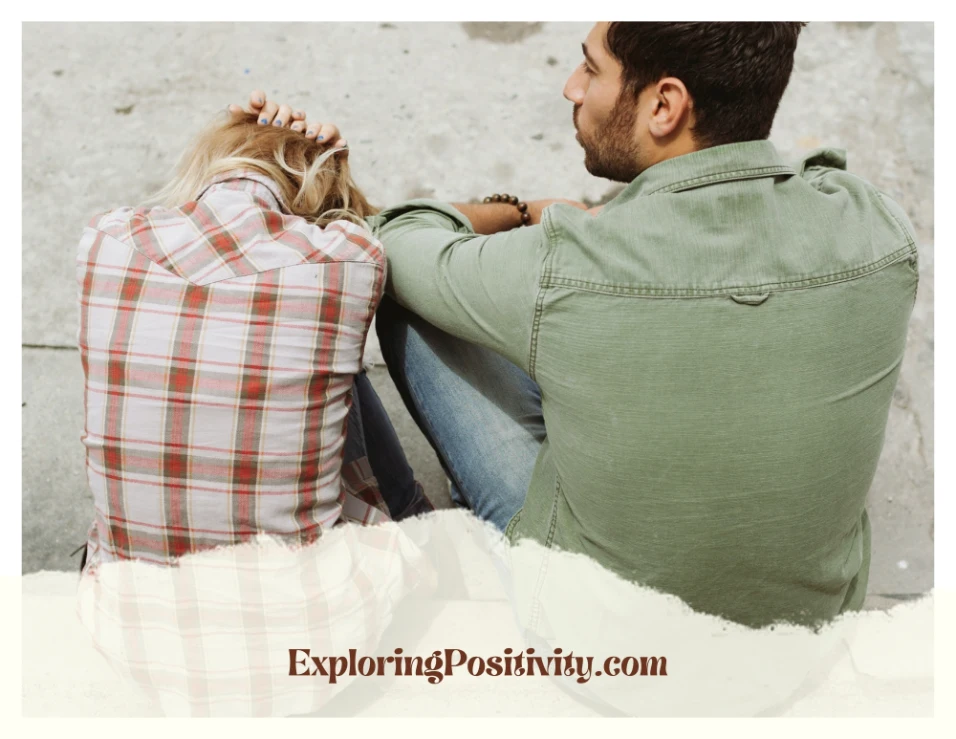
Navigating Triggers of Avoidant Attachment
Certain relationship events may spur old attachment fears and defenses. Strategies for navigating triggers include:
Pinpoint triggering situations
Name specific contexts reviving avoidant reactions like holidays, rejections, and extensive talks.
Have a game plan
Proactively prepare to short-circuit knee-jerk distance when known triggers arise.
Ask partner for extra reassurance
Request extra love, patience, and reassurance if a trigger situation occurs.
Limit alcohol
Drinking lowers inhibitions, allowing avoidance patterns to take overreactions.
Breathe through urges to flee
Take deep breaths while recalling you’re emotionally safe now. Wait out the reflex to withdraw.
Talk it through after
Debrief with your partner about why the event was challenging and made you want to pull away. Seek comfort.
Pause heated conversations
During triggers, call a timeout until boiling emotions cool down. Avoid reacting defensively.
Replace negative thoughts
Counter panicky thoughts with affirming ones like “My partner cares for me.”
Soothe with the five senses
Calm intense feelings through smelling flowers, listening to music, and taking a warm bath.
Ride the wave
Remember, triggers pass like ocean waves. Don’t let them carry you away in the moment.
Remember previous resiliency
You’ve overcome complex events before. This, too, shall pass.
Building a Support System for Avoidant Attachment
Don’t go it alone. Cultivate a community of support to turn to. Consider:
Join online forums
Connect with others working through attachment wounds on Reddit, Facebook groups, etc.
Confide in close friends
Share your attachment style and goals. Ask for encouragement.
Schedule frequent dates
Pay attention to dedicating the couple’s time amid life’s busyness. Stay bonded.
Attend meetup groups
Forge new friendships through hobbies, causes, and activities you enjoy.
Participate in classes
Take engaging courses to meet like-minded people.
Volunteer together
Give back while increasing social connection.
Family counseling
Repair childhood wounds through sessions with blood relatives.
Embrace mentors
Seek wisdom from those ahead, like counselors, clergy, or advisors.
No toxicity allowed
Limit contact with critical, abusive, or enabling people from the past.
Show self-compassion
When you slip into old patterns, respond with kindness, not shame. Progress isn’t linear.
Replacing Avoidance With Emotional Presence
Rather than withdrawing or deceiving, avoidant partners can cultivate emotional availability. Ways to stay present include:
Mindfulness practices
Meditation, breathwork, and yoga calm fears so you can be attentive without checking out mentally.
Schedule shared activities
Kitchen cooking, hiking, volunteering – interactive time together builds connection.
Give complete eye contact
Don’t distract yourself by looking at phones, TV, or wandering eyes when your partner is vulnerable.
Snuggle without sex
Non-sexual physical affection communicates comfort and safety in being close.
Verbalize your commitment
Express you’re going nowhere despite challenges navigating intimacy.
Validate partner’s reality
If they share hurt feelings, convey that you believe their experience is natural for them.
Allow space for all emotions
Let even “negative” feelings like hurt and anger exist without trying to rush past or fix them.
Share Appreciation
Express heartfelt gratitude for your partner choosing to love someone whose attachment style makes intimacy difficult.
Pause during conflict
Agree to signal each other with phrases like “I’m feeling flooded” during fights, signaling the need to take a break and re-center.
Lean into discomfort
When closeness starts to feel uncomfortable, gently lean in more rather than instinctively fleeing. With practice, it expands your window of tolerance.
Therapy as needed
See a couples counsellor whenever avoidance flares up to strengthen emotional presence skills.
Improving Communication for Emotional Safety
Positive communication fosters an environment where avoidant partners feel safe to open up. Helpful approaches include:
Nonviolent communication
Use “I feel…” statements rather than “you” accusations. Take ownership of your experience.
Active listening
Practice reflecting on the essence of what your partner shares without inserting your commentary or advice. Prioritize understanding.
Check assumptions
Clarify instead of making negative assumptions about your partner’s intentions. Ask, “What did you mean when you said…?”
Show empathy
Imagine yourself in your partner’s shoes. Express you understand how they feel.
Compliment strengths
Notice positive traits in each other, like patience, humor, or determination—express appreciation.
Adopt a team mindset
Think in terms of cooperation, not competition. You’re on the same side.
Allow imperfection
Accept occasional mistakes or miscommunications as inevitable. Focus on repair, not blame.
Timeouts when needed
If a discussion gets overly heated, take a break to regain composure before continuing.
Speak your needs kindly
Use “I” language to explain your needs around intimacy pacing and contact preferences without demanding.
Seek common ground
Look for mutually desirable compromises rather than winner-takes-all outcomes.
Self-Soothing Anxiety and Avoidance Triggers
Powerful emotions can hijack reactive attachment patterns. Calming techniques help stay grounded, including:
Recognize escalation
Notice rising distress and take action before fight-or-flight instincts fully engage.
Breathe consciously
Inhale slowly, counting to five; exhale deeply, counting to seven. Repeat until calm.
Squeeze a stress ball
Gently squeezing a soft ball discharges tension. Carry one when anticipating triggers.
Play calming music
Keep a playlist of beloved songs that make you feel soothed when activated.
Diffuse essential oils
Scents like lavender and eucalyptus promote relaxation during turbulent emotions.
Cuddle a pet or stuffed animal
Warm affection lowers blood pressure.
Move your body
Shake off nervous energy through stretching, dancing, or walking briefly.
Drink herbal tea
The ritual and aroma of chamomile or mint tea activate the parasympathetic nervous system.
Take a warm bath or shower
Let water be your secure embrace to melt away stress.
Write in a journal
Expressive writing for 15 minutes about emotions creates space between impulse and action.
Call a friend
Hearing a caring voice co-regulates distress. Maintain a go-to list of supportive contacts.
Nurturing Self-Worth in Avoidant Partners
Childhood emotional neglect often injures self-esteem. Help avoidants cherish themselves through:
Encourage intrinsic values
Support passions that give their life meaning beyond looks, status, or achievement.
Challenge negative self-talk
Don’t absorb society’s messages about suppressing vulnerability as a weakness. You are enough.
Appreciate their uniqueness
Remind them of the unique quirks and talents they bring to the world.
Help set self-compassionate goals
Avoid perfectionism. Praise authenticity over people-pleasing.
Nurture their creativity
Making art, playing music, and writing enable self-expression, reducing shame about sharing feelings.
Consider therapy
Work through core beliefs of unworthiness fueled by childhood emotional neglect or abuse.
Practice mindful self-care
Savor relaxing baths, favorite foods, or nature walks that replenish their soul.
Send love to inner child
Imagine holding their precious inner child self. Say aloud all you’ve wanted to hear.
Look at old pictures
Photos from youth remind adults they were once vulnerable, innocent children deserving protection.
Volunteer
Contributing time to others cultivates self-esteem and connectedness.
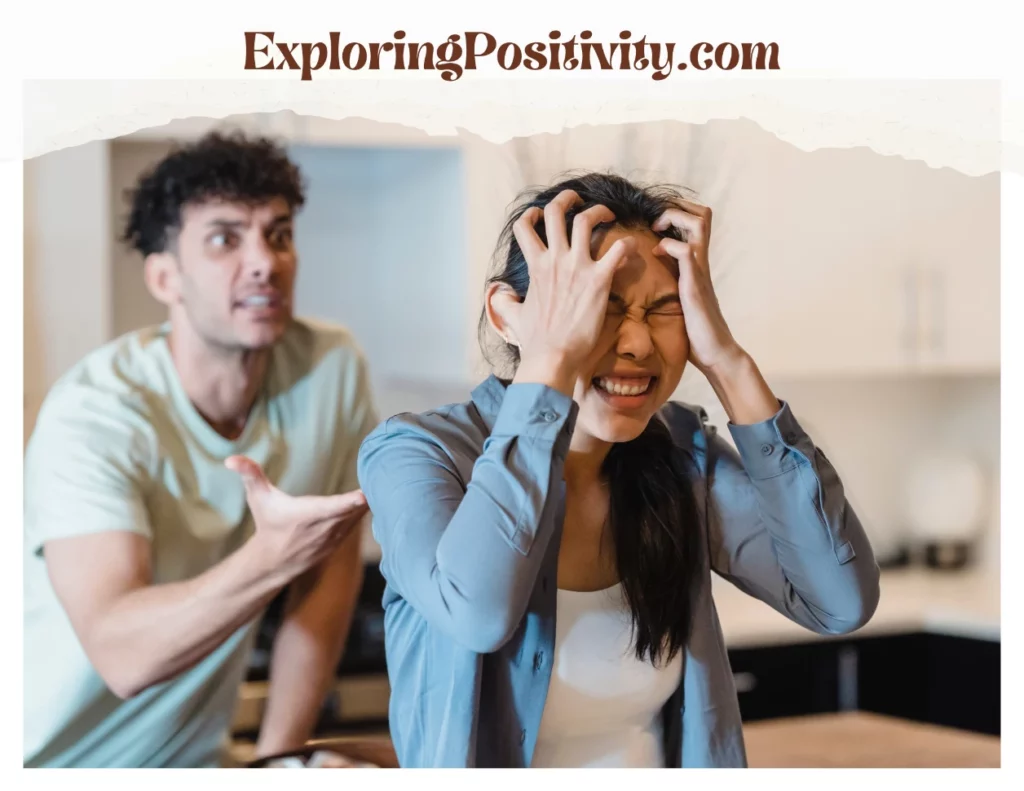
Enhancing Secure Attachment Knowledge
Learn all you can about attachment theory so behaviors make sense versus feeling personal:
Read attachment books
Titles like Attached by Levine and Heller explain styles’ origins. Used bookstores offer discounts.
Listen to leading therapists
Download attachment-focused talks and podcasts from luminaries like Stan Tatkin.
Watch educational videos
Free YouTube channels like Alan Robarge’s explain styles thoroughly.
Google your questions
The internet offers unlimited free information if you filter carefully.
Visit therapists’ websites
Many share blog articles explaining attachment concepts.
Learn your style
Take childhood wound and adult attachment quizzes to grow in self-awareness.
Observe reactions
Notice your avoidance or anxiety patterns in real-time. Increased consciousness defeats blind reflexes.
Highlight progress
Keep an attachment journal detailing insights gained and growth achieved.
Discuss with friends
Those who’ve worked through similar issues provide support, inspiration, and resources.
Argument rehearsals
Practice having vulnerable conversations out loud to grow confidence.
Avoidance develops early on to limit hurts, but compassion and courage can unravel old defenses. With insights into your patterns, communication tools, and unwavering self-love, intimacy unfolds one step at a time. The story of a securely attached “us” awaits by replacing lies with truth and isolation with belonging.
Attachment-Focused Exercises for Couples
Structured activities create opportunities for emotional connection between avoidant and anxious partners.
Thirty-six questions for intimacy
Slowly work through the guided list of increasingly vulnerable questions that foster closeness.
Weekly check-ins
Dedicate time each week to share feelings and conflicts and appreciate each other.
Outside adventures
Trying new activities, like hiking, concerts, or museums, creates shared experiences.
Take a couples workshop
Many libraries, colleges, and counseling centers offer classes teaching healthy relating skills.
Co-create vision boards
Cut out a magazine or print photos representing your relationship dreams and glue them onto posterboards.
intimacy jar
Write down date ideas, thoughtful questions, and affectionate gestures for the other to pull out randomly.
Read together
Take turns choosing books to read aloud to each other in bed to unwind and bond.
Cook together
Playfully preparing meals, chatting, and laughing lowers the guard between partners.
Schedule massages
Give each other gentle, soothing massages with safe boundaries.
Walk and talk
Go for long walks to remove distractions and open up heart-to-heart.
Game nights
Playing board and card games immerses partners in the present moment together.
Relaxing playlists
Create Spotify playlists with songs that inspire sensuality, calm, and affection.
Developing a Secure Base Within
By providing internal emotional support, avoidants grow less reliant on partners. Ways to find security within:
Self-parenting
Talk gently to yourself like a loving parent. Provide your inner child with unconditional understanding.
Manage negative self-talk
Replace inner criticism with encouragement through cognitive reframing.
Tolerate discomfort
Sit with difficult emotions without fleeing to addictions, distractions, or lies.
Self-soothing rituals
Develop habits like meditating, exercising, baths, or calling friends that reliably calm your nervous system.
Attune to your body
Check-in on tension levels and care for physical needs ignored when caught in avoidance patterns.
Healthy Boundaries
Don’t accept mistreatment from others that compromises safety. Limit or end unhealthy relationships.
Grow self-knowledge
Through journaling and therapy, you better understand your emotional wounds and triggers.
Find security objects
Keep comforting items like stuffed animals or a cherished blanket nearby when you need soothing.
Positive visualizations
Imagine yourself feeling worthy, loved, and emotionally fulfilled.
Affirmations
Write uplifting messages to reframe limiting self-beliefs. Post them visibly.
With new relational tools and the courage to be vulnerable, avoidant walls transform into bridges connecting intimate partners. The old narrative of distrust was but one chapter. Take heart, for many hopeful pages await to be written.
Compassionate Communication Regarding Avoidance Triggers
Certain situations may activate an avoidant partner’s defenses. Skillful discussion can ease reactivity:
Acknowledge their fear
Validate you understand discomfort with emotional intimacy is natural for them, even if not your experience.
Speak non-judgmentally
Criticism heightens defensiveness. Frame sensitively using “I” statements about your feelings.
Discuss solutions collaboratively
Rather than demanding change, brainstorm accommodations that support both partners, like scheduling intimacy check-ins.
Emphasize safe space
Ensure your care for them remains consistent, even during inevitable conflicts, navigating different needs.
Respect their boundaries
Don’t take distancing personally. Let them withdraw when overwhelmed as long as they explain their reasons and reconnect later.
Offer options
Suggest incremental ways to stretch the comfort zone, like five-second hand holding or two-sentence sharing of a vulnerability. Baby steps.
Communicate your needs kindly
Explain vulnerabilities like the need for words of affirmation without shaming their expressions of intimacy.
Find the underlying fear
Ask what specific worry the situation brings up, like fear of engulfment or betrayal. Address that.
Thank them for trying
Express gratitude for any attempts, however small, at emotional availability. Positive reinforcement.
Check in the next day
After a conflict, proactively re-engage in discussion when calmer—repair rifts.
Building Self-Esteem and Security
Childhood emotional neglect often leaves invisible wounds to self-worth. Healing ideas include:
Write a letter of understanding to your inner child
Express compassion for their adaptations to difficult circumstances.
Spend time in nature
Being immersed in the soothing rhythms of the natural world brings perspective.
Try trauma-focused therapy
Process past pain to liberate you from its grip in present-day life.
Join a support group
Knowing others have similar struggles helps release shame. You are not alone.
Volunteer to help others
Caring for people or animals cultivates self-esteem and connection.
Make time for creativity
Crafting, playing music, and dancing enables self-expression without judgment.
Limit social media usage
Curate your digital spaces to avoid toxicity and unfair comparisons.
Practice self-care
Get enough sleep, healthy food, and physical activity. Take bubble baths. Say no to burnout.
Spend time with positive people
Uplifting friends who see your light can gradually override critical inner voices from the past.
Identify triggers
Notice situations resurrecting old self-doubts so you can challenge their messages.
Moving Through Emotional Flashbacks
Old wounds get unexpectedly reignited in current life. Coping strategies include:
Remind yourself the pain is from the past
Allow the feelings to flow through without believing pain means present danger.
Breathe slowly to access the logical brain
Deep breathing activates the prefrontal cortex to override fight-or-flight reactivity.
Visualize a safe place
Picture somewhere beautiful, peaceful, and comforting. Imagine the sights, sounds, and feels.
Hug yourself
Wrap your arms around your shoulders in a soothing embrace.
Speak encouraging words
Verbally reassure yourself, “I am safe now” and “I will get through this.”
Engage the senses
Smell a calming scent, listen to soothing music, touch soft fabric, or plant your feet firmly on the ground.
Move your body
Shake off nervous energy through stretching, dancing, or walking briefly.
Cry if needed
Let tears release old hurts still awaiting healing.
Call a supportive friend
Hearing a caring voice co-regulates distress.
Limit news/social media
Unplug from additional stressors that exacerbate symptoms. Come back into the present.
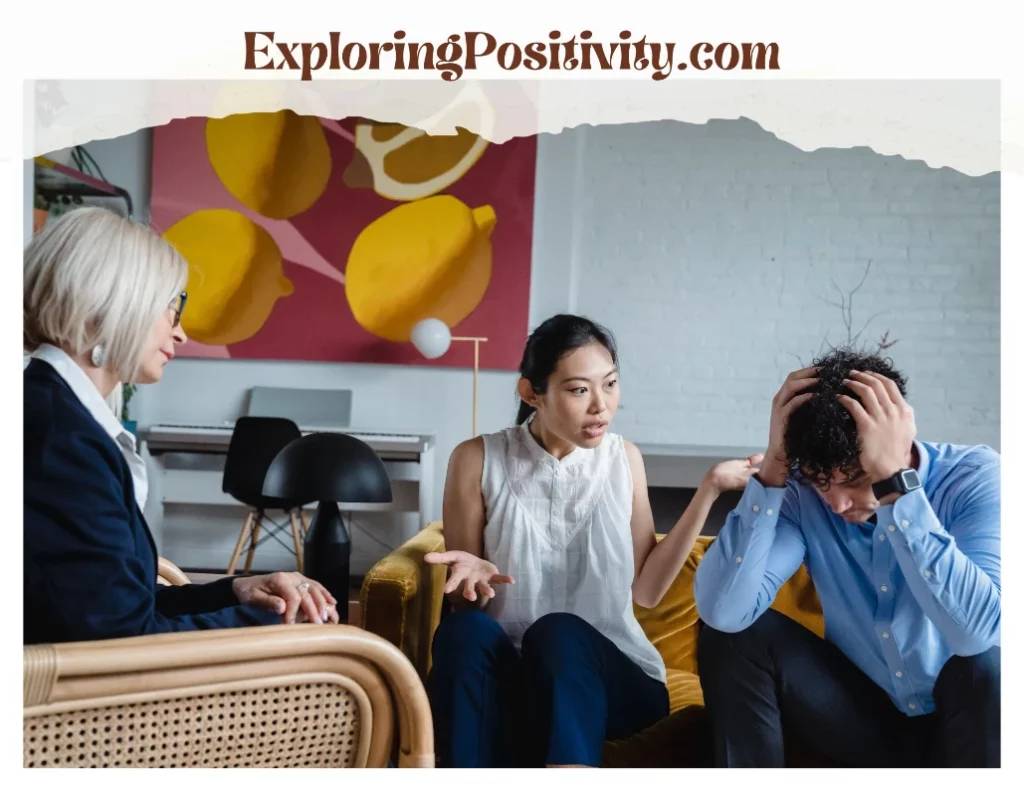
Ideas for Decreasing Isolation
Avoidance inclines people to isolate. But connection builds resilience. Consider:
Volunteer
Giving time to others combats loneliness. Animal shelters, food pantries, and parks all need help.
Take a class
Lifelong learning centers offer courses on every topic imaginable to meet people.
Join a club
Search meetup.com for local groups united by common interests like hiking, board games, coding, reading, and art.
Adopt a pet
Pets give affection, comfort, and purpose. Walks with a dog introduce community.
Offer to help Neighbours
Shovel snow, share garden produce, and lend tools. Build neighborhood bonds.
Shared hobbies
Find others who enjoy similar hobbies by searching Facebook groups, clubs, and community bulletin boards.
Diversify social circles
Bond with many people – friends, family, coworkers, classmates.
Set social goals
Commit to one phone call, coffee date, or social activity per week. Consistency breeds connection.
Develop comfort with small talk
Practice casual chatting to cultivate community belonging everywhere – waiting in line, walking trails.
Attend community events
Stop by local farmer’s markets, festivals, and craft fairs. Enjoy without pressure.
While attachment styles may activate unhelpful patterns, we are more significant than our defenses. With new tools, understanding, and loving support, more authentic ways of connecting await. Dare to be vulnerable. Dare to let the old narrative go. The rest of the story remains unwritten, and the pen is in your hand.
Closing Remarks – Avoidant Attachment and Lying
Avoidant attachment and lying develop early in life as a protective instinct against emotional hurt. But the exact distancing mechanisms that once served a purpose can impede intimacy as adults.
Lying and concealment become maladaptive coping strategies to uphold distance and independence. But, cultivating self-awareness, empathy, and communication skills allows avoidantly attached individuals to rewrite harmful patterns.
Those fearful of vulnerability can dismantle shame and distrust with a compassionate partner and potentially professional support. Small steps towards honesty and interdependence pave the way for secure attachment.
Rather than a fixed state, attachment styles respond to new relational experiences throughout life. Even deeply ingrained tendencies like lying can evolve into forthright emotional intimacy through consistent reassurance.
Past relationship wounds need not define future happiness. Our early attachment style is one chapter in an unfolding story, not the whole book. With courage and effort, a new narrative of trust and connection awaits.




